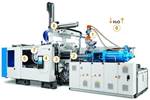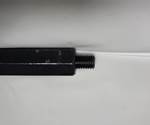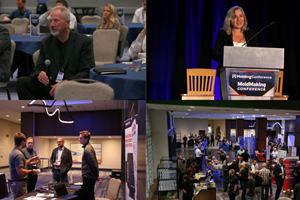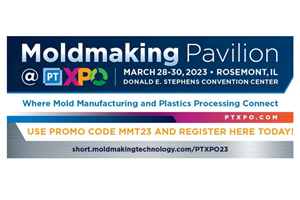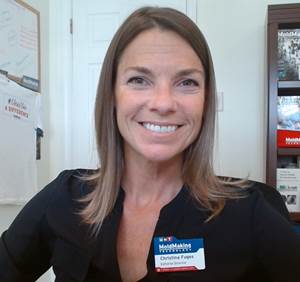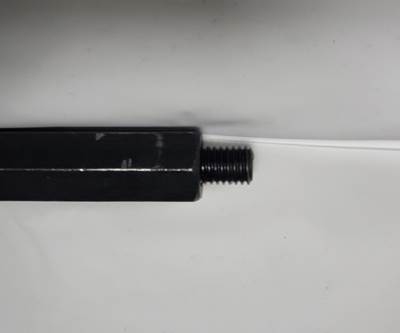VIDEO: How Does Thermal Imaging Communicate Thermal Dynamics in a Hot Runner System?
MoldMaking Technology Editorial Director Christina Fuges chats with Rich Oles president of Alba Enterprises about thermal imaging and how it communicates thermal dynamics in a hot runner system, how it picks up problems that other approaches cannot pick up at all or not as quickly, and how it will advance in the future.
MoldMaking Technology Editorial Director Christina Fuges chats with Rich Oles president of Alba Enterprises about thermal imaging and how it communicates thermal dynamics in a hot runner system, how it picks up problems that other approaches cannot pick up at all or not as quickly, and how it will advance in the future.
Christina Fuges: How does thermal imaging communicate thermal dynamics in a hot runner system?
Rich Oles: It's a picture, so it takes complex thermal dynamic data that people can't visualize and puts it into a context of an image. So even non-technical people, who are in an administrative role and financially responsible for the plant, can see exactly what's going on. We explain to people that if it's red, it's too hot. If it's blue, it's too cold. The blue area turning red is going to cost you $50,000 if you want it in 24 hours. If you want it in three weeks, it's going to cost you five. What do you want to do?
Fuges: How would it be different for an OEM, versus a molder, versus a mold builder?
Oles: A lot of that has to do with the scale of the operation. At typical OEMs and large tier-one injection molds, there are virtually thousands of people. So communicating very complex technical information about thermal dynamics up to the right person, it is like a game of telephone. When one person tells the next person who tells their supervisor, by the time it gets to the person who needs to make the decision, they think “It's no big deal. We're just down for a little bit."
Meanwhile, BMW is going to shut down the production line. Using that graphic image of a thermal dynamic issue is a great way to communicate to the moldmaker. They can apply that technology in a completely different manner. They can look to make sure that the mold is constructed correctly and that a hot runner manifold isn't contacting areas unintentionally, preventing the operator from having to put the mold in a press, try to run it and it fails.
Fuges: Can you give an example of how thermal imaging can pick up a problem that other approaches cannot pick up at all or not as quickly?
Oles: I have learned a lot working with micro and miniature injection molding from medical device manufacturers. They build the models, and they mold the products. It's such a small mass that it's impacted dramatically by ambient air movement, as it comes off, which can cause part warpage. In one case we used thermal imaging equipment by the end-of-arm tooling as the part went onto a conveyor system and traveled along. We realized that the conveyor was affecting the way the part cooled. Once we took the parts off of the conveyor, we could see the thermal signature on the conveyor belt. As the conveyor ran the temperature of the belt rose, which impacted the parts. We could not see that without thermal imaging.
Fuges: What are some future advancements you see with thermal imaging?
Oles: Camera speed is changing, as well as the size and mobility of the camera. They now have add-ons for cell phones that are useful. The biggest issue is teaching people how to use a thermal imaging camera correctly and dealing with emissivity. A future advancement that I hope to be involved with is the ability to negate a plastic part with a thermal imaging camera through filtering and the camera’s wavelength. It's like an x-ray, a poor man's x-ray that you can do live right at the press.
Related Content
More Than Moldmaking at PTXPO 2023
The Moldmaking Pavilion returns to the Plastics Technology Expo (PTXPO) March 28-30, 2023, at the Donald E. Stephens Convention Center in Rosemont, Illinois, but there’s more to discover than moldmaking.
Read MoreMoldmaking, the Relentless Pursuit of Innovation … Oh Yeah!
Innovation was at the root of the presentation lineup for the 2023 MoldMaking Conference, which included a heavy focus on automation, collaboration and communication, as well as mold design, talent development, reshoring and sustainability.
Read MoreWhere Mold Manufacturing and Plastics Processing Connect
The Moldmaking Pavilion is one of seven pavilions returning to the show that houses exhibitors offering technology and service solutions for your specific moldmaking needs.
Read MoreMoldMaking Technology's Leadtime Leader Awards Competition Returns!
After a brief hiatus, MoldMaking Technology’s Leadtime Leader Awards Competition is back!
Read MoreRead Next
Plastic Injection Molding from Pellet to Part
This series of articles examines the injection molding process, through which a plastic pellet is transformed into a plastic part.
Read MoreCoupler Lends Easy, Reliable Solution to Quick Mold Change
A coupler helps provide a faster, more reliable way to tie positive return ejection into a mold.
Read MoreAre You a Moldmaker Considering 3D Printing? Consider the 3D Printing Workshop at NPE2024
Presentations will cover 3D printing for mold tooling, material innovation, product development, bridge production and full-scale, high-volume additive manufacturing.
Read More

